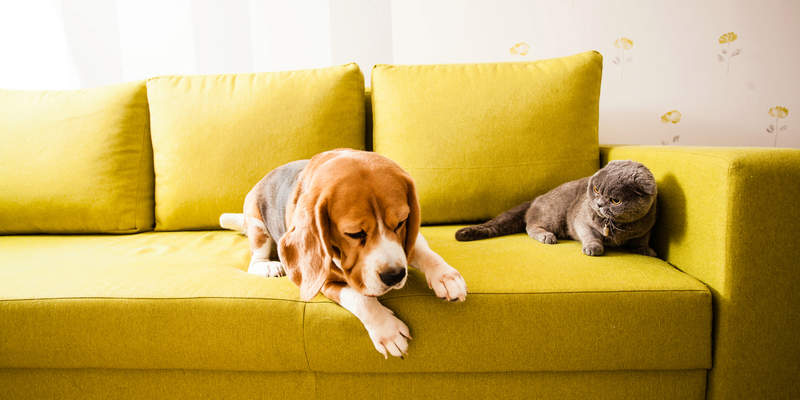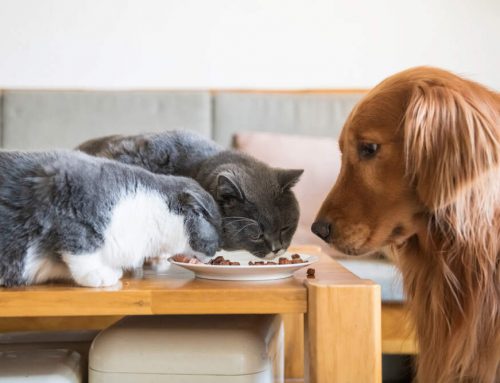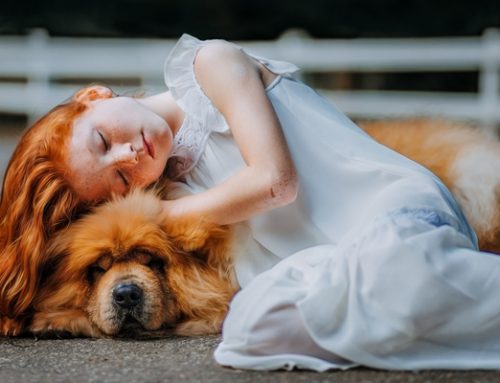Without the help of verbal communication, signs of depression in cats and dogs are quite difficult to detect. However, pet owners can still prepare for the possibility by spotting the signs as early as possible, and learning how to help a depressed dog or cat. Get acquainted with the conditions of canine and feline depression, and prepare ways to help your own dog or cat feel better.
What to know about depression in cats or dogs:
Symptoms of depression in humans often depend on the person experiencing them. Feelings of guilt and hopelessness are subjective, as are many of the other changes in mood or behavior. For this reason, it can be difficult for humans to recognize these symptoms in themselves and begin treatment.
Similarly, it can be difficult to recognize symptoms of depression in dogs and cats. But there are a few predicting factors to look out for. You may notice your pet becoming depressed after their favorite sibling goes off to college, or if a new person moves into the home.
Cats in particular are creatures of habit. Your feline friend may become depressed after switching pet food brands or types of litter.1 Whether it’s new food or a new face, it’s important for pet owners to temper their expectations and make the change as slowly as possible.
Another common trigger of feline and canine depression is the loss of a family member. You’ve likely seen one of those stories that tugs at your heartstrings: a pet owner passes away, and the pup waits at the person’s final resting place or a favorite dog park. These stories emphasize the powerful bonds between pet and owner. But they also demonstrate the way grief affects pets just as deeply as it does humans.
Is my dog or cat depressed?
For anyone who has lived through grief or depression, it may be a top priority to keep a pet from going through the same thing. Get to know the following signs of depression in cats and dogs. Staying informed will help you address worrisome behavior sooner rather than later.
Cats that suffer from depression may experience a loss in appetite, or they may start overeating. The same patterns apply to a cat’s grooming habits, leading to over- or under-grooming. After a change in home environments, cats with depression may start hiding from people or avoiding affection altogether.
Another sign of depression in cats is excessive vocalization. Lonely cats often meow out of boredom or to attract the attention of their owner. Depressed cats may also soil parts of the house or engage in other inappropriate litter box behavior.
Aside from meowing, dogs experience many of the same signs of depression in cats. A dog with depression may stop eating, or eat excessively as a form of comfort. They may also avoid people and hide in secluded places like a closet or basement.4
Though it may seem like a harmless habit, paw licking or chewing is a common symptom of canine depression. Paw chewing is also a symptom of dog food sensitivities, so check your dog’s skin and paws thoroughly to narrow down what is bothering your pet.
Dogs with depression may also become disobedient or lose interest in playtime activities. When left alone, dogs typically nap and wait for their friends to get home. A depressed dog, however, may sleep a lot more than usual. Rather than jumping at the door, your pup may not even react to your arrival.
How to make your dog or cat happy:
Though they may not be in the right mood for it, keep trying to engage with a depressed pet. Cats are commonly thought of as antisocial, but loneliness and neglect is one of the causing factors of feline depression. Spend more time with your cat to make them feel like the royalty of your household again.
For dogs with depression, pet owners should avoid using positive reinforcement for the undesirable behavior. Showering a depressed dog with treats and attention will seem like a reward for acting out or secluding themselves. Help your pup stay happy and healthy by maintaining routines for exercise and feeding.
Most of the time, pets are bundles of joy that liven up your day. In fact, owning a dog or a cat can have therapeutic benefits for humans with depression. Keep in mind that although depression affects both pets and humans, it doesn’t have to affect your warm and loving relationship with your pet. Prepare yourself for the best of days and the worst of days by making your pet’s health a consistent priority.
SOURCES:
- Bailey, Angie. “Cat Depression.” Catster, 21 Dec. 2017.
- Banks, T.J., et al. “Feline Depression: Is Your Cat Sad?” Petful, 13 July 2015.
- Becker, Karen. “Got a Sad Dog? Try These 5 Strategies to Cheer Up Your Pup.”Mercola.com, 29 Mar. 2017.
- Weiss-Roessler, Josh. “Warning Signs of Dog Depression.” Cesar’s Way, 4 Feb. 2016.





